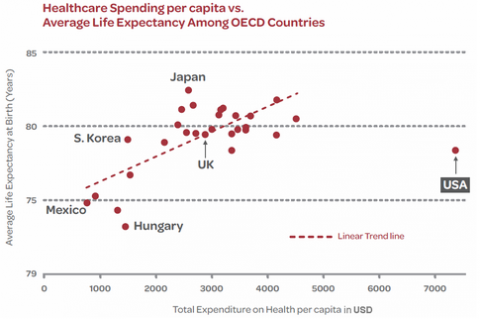New Study: Health Insurance Overhead Waste Unchanged by Affordable Care Act
March 12, 2015 by Ben
Filed under Healthcare-NOW! Updates
The International Journal of Health Services published a research paper by Healthcare-NOW!’s Executive Director, Benjamin Day, PNHP co-founders David Himmelstein and Steffie Woolhandler, and former Healthcare-NOW! intern Michael Broder, titled “The Affordable Care Act and Medical Loss Ratios: No Change in First Three Years.” The article found that, despite the promise of the Affordable Care Act to reduce health insurers’ overhead spending and thereby to increase the share of patients’ premiums that goes toward medical spending, overhead waste has not gone down since implementation of the law. The joint press release from Healthcare-NOW! and PNHP is below:
Despite claims by the Obama administration that the Affordable Care Act will reduce health insurance companies’ spending on overhead, thereby channeling a greater share of consumers’ premium dollars into actual patient care, insurers’ financial filings show the law had no impact on the percentage of insurer expenditures on such things as administration, marketing and profits.
That’s the chief finding of a team of researchers, including two prominent physicians on the faculties of the City University of New York’s School of Public Health and Harvard Medical School, in an article published Wednesday in the peer-reviewed International Journal of Health Services.
Examining U.S. Securities and Exchange Commission filings of nine large insurers, and using a constant definition of what constitutes an insurer’s “medical loss ratio” or MLR – i.e. actual spending on payments to doctors, hospitals, pharmacies, etc. – the researchers found that the weighted average MLR in the three years after the new ACA regulations took effect (2011-2013) was 83.05 percent, compared to 83.04 percent in the three years prior to the reform.
The ACA sets limits on insurers’ overhead, mandating an MLR of at least 80 percent in small-group markets and 85 percent in the large group market. However, the Obama administration changed the traditional yardstick by which the MLR is measured.
The new way of calculating the MLR allows insurers to classify most expenditures on “quality improvement” initiatives and the updating of coding systems as medical expenditures, and allows them to subtract most taxes, regulatory fees and “community benefit” spending.
“Rather than go along with the administration’s moving of the goal posts to the apparent advantage of the insurers, we stuck with the traditional way financial analysts and insurance firms calculate MLR, namely, by dividing total medical payments by total premium income,” said Benjamin Day, the study’s lead author.
“What we found is that there’s been no significant change in the insurers’ MLR since the implementation of the new regulations.”
MLRs fell at four firms – UnitedHealth, Humana, Aetna and WellCare – and increased slightly at four others and markedly at one (Centene, a major managed Medicaid contractor).
Day continued: “Although the MLR requirements forced insurers to pay rebates of $1.1 billion in 2011 and $504 million in 2012 – payments that were touted by the Department of Health and Human Services as a major boon to consumers – these rebates constituted less than 0.1 percent of private insurance company revenues and appear to have had no overall impact on MLRs.”
Day, whose published research includes articles on labor history and health care reform, currently serves as executive director at Healthcare-NOW, a national coalition of groups advocating for a single-payer health care system.
Senior author Dr. Steffie Woolhandler, professor at the City University of New York’s School of Public Health at Hunter College and co-founder of Physicians for a National Health Program, said a number of factors might explain why the ACA hasn’t raised MLRs.
“Most plans already met the MLR requirement from 2007-2009, even without the MLR redefinition in the ACA,” Woolhandler said. “Moreover, self-insured employer plans, which accounted for 60 percent of all covered workers in 2011, were entirely exempt from the MLR requirement. In addition, a number of exemptions and adjustments were granted to a wide spectrum of plans and to several states, temporarily nullifying the new mandate.”
Woolhandler observed that traditional Medicare’s overhead is about 2 percent, i.e. 98 percent of Medicare’s spending goes toward medical care. “The ACA is too lenient on private insurers, sets too low a bar for their payments for actual care, and provides them with too many loopholes.
“The lesson is clear,” she said. “We need to adopt a publicly financed, improved Medicare for All.”
“The Affordable Care Act and Medical Loss Ratios: No Impact in First Three Years,” Benjamin Day, M.A., David U. Himmelstein, M.D., Michael Broder, B.A., Steffie Woolhandler, M.D., M.P.H. International Journal of Health Services, Vol. 45, No. 1 (January 2015).
The full text of the article is available at the links above or from Mark Almberg at mark@pnhp.org.
*****
The International Journal of Health Services (joh.sagepub.com) contains articles on health and social policy, political economy and sociology, history and philosophy, ethics and law in the areas of health and health care.


Spread the word